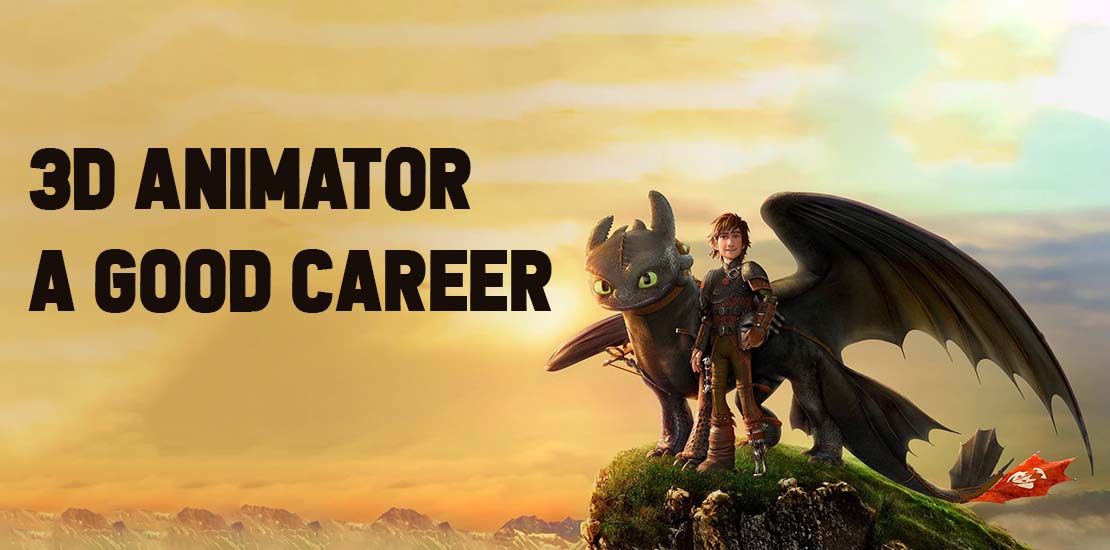Table of Contents
# What is included in animation training?
# What are the key features of a top animation institute?
# Conclusion
Animation training institutes are the catalysts that transform aspiring animators into highly skilled professionals, capable of bringing imagination to life. These institutes offer a structured and immersive learning environment, encompassing a wide spectrum of animation essentials, ranging from fundamental principles to cutting-edge techniques.
With their expert guidance and industry-focused approach, these institutes lay the foundation for aspiring animators to embark on a journey of creativity and mastery in the captivating world of animation.
In this blog, we will delve into what is typically included in animation training and explore the key features that define top animation institutes.
What is included in animation training?
Animation training institute typically encompasses a range of topics and skills to provide individuals with a comprehensive understanding of the animation process. While the specific content may vary depending on the institute and program, here are some common elements included in animation training:
Animation Principles:
- Students are introduced to the fundamental principles of animation, such as squash and stretch, anticipation, timing, and staging.
- They learn how to bring characters and objects to life by understanding the principles that create the illusion of movement and believability.
Software and Tools:
- Training includes instruction on industry-standard software used for animation, such as Adobe Animate, Autodesk Maya, or Toon Boom Harmony.
- Students learn how to navigate the software interface, use essential tools, and apply various techniques to create animation sequences.
Character Design and Development:
- Animation training often covers the principles of character design, including anatomy, proportions, facial expressions, and personality development.
- Students learn to create visually appealing and expressive characters that resonate with the audience.
Storyboarding:
- Storyboarding is a critical aspect of animation training. Students learn how to create visual narratives by sketching out scenes and sequences, planning camera angles, and establishing the flow of a story.
- Storyboarding helps in pre-visualization and effective communication of ideas.
2D and 3D Animation:
- Animation training typically covers both 2D and 3D animation techniques.
- Students learn the principles and techniques specific to each medium, including keyframing, frame-by-frame animation, rigging, character posing, and manipulating objects in a virtual 3D environment.
Visual Effects:
- Some animation training programs include instruction on visual effects (VFX) techniques commonly used in animation.
- This may involve learning particle effects, dynamics, simulations, and compositing to enhance the visual appeal and realism of animated sequences.
Motion Graphics:
- Motion graphics are often a part of animation training, focusing on creating animated elements for videos, title sequences, user interfaces, and promotional content.
- Students learn how to integrate animation with typography, graphics, and visual effects to create visually engaging motion graphics.
Project-Based Learning:
- Animation training typically includes hands-on projects that allow students to apply the concepts and techniques they have learned.
- These projects can range from short animations and character exercises to more extensive storytelling assignments, enabling students to build a portfolio of their work.
What are the key features of a top animation institute?
Top animation institute are distinguished by several key features that set them apart from other institutions in the field.
Here are some of the key features commonly associated with top animation institutes:
- Industry-Relevant Curriculum: Top animation institutes offer comprehensive and industry-focused curricula that cover a wide range of animation disciplines and techniques.
- Experienced Faculty: Leading animation institutes employ experienced and accomplished faculty members who have significant expertise in the animation field.
- Industry Collaborations and Internships: Leading animation institutes establish strong connections and collaborations with animation studios, production houses, and industry professionals.
- Career Placement Assistance: Prominent animation institutes offer dedicated career placement services to assist students in launching their careers after graduation.
- Continued Professional Development: Leading animation institutes emphasize the importance of lifelong learning and professional development.
- Industry-Experienced Guest Lecturers: Leading animation institutes often invite industry professionals as guest lecturers or visiting faculty members. These professionals bring their practical experience, industry insights, and the latest industry trends directly to the students.
- Specialization Options: Top animation institutes may offer specialized programs or tracks that allow students to focus on specific areas of interest within animation.
- Industry Competitions and Showcases: Prominent animation institutes often organize or participate in industry competitions, film festivals, and showcases.
- Research and Innovation: Top animation institutes foster a culture of research and innovation in animation. They encourage students and faculty members to engage in research projects, explore new techniques, and push the boundaries of animation.
- Global Exposure: Leading animation institutes often have international collaborations and exchange programs that provide students with opportunities to study or work abroad.
If you are finding a top animation training institute then go for George Animatrix, well acknowledged for their excellence in this field.
Conclusion
Choosing the right animation institute like George Animatrix is essential for individuals seeking a successful career in the animation industry. Top animation institutes offer industry-relevant curricula, experienced faculty, industry collaborations, practical training, and career support.
They foster a culture of innovation, provide global exposure, and prepare students to meet the demands of the ever-evolving animation field. By equipping students with a comprehensive skill set, industry connections, and a strong foundation, these institutes pave the way for animators to excel and make their mark in the world of animation.
Direction – https://goo.gl/maps/WrGQEwn7e9Y12r5XA



